- Home
- Winston Groom
1942: The Year That Tried Men's Souls Page 17
1942: The Year That Tried Men's Souls Read online
Page 17
Next day, MacArthur sat at his desk seeing to the enormous problem of destroying any supplies that might be useful to the enemy. These included all of the vast supply depots, warehouses, and oil-storage facilities located in and around Manila. In the midst of this chore his chief of staff, General Sutherland, informed MacArthur that one of the warehouses contained the library of MacArthur’s father, former governor-general of the Philippines—four thousand books. The general thought for a moment, then said, “Blow it.”*16
* * *
On Christmas Eve MacArthur, his wife and son, and a number of staff members boarded a small steamer for his retreat to the fortress of Corregidor, a pollywog-shaped island ten miles long and a mile wide at its widest point, known familiarly as the Rock. Corregidor lay at the entrance to the bay two miles off the tip of Bataan and—like Singapore—was touted as one of the most heavily fortified bastions on earth. For twenty years it had been prepared under War Plan Orange as the headquarters of American forces defending the Bataan positions. The trip across the bay that night was a strange one for the Americans, upon whom it was just dawning that the Manila they had all known would soon be in enemy hands. A moon was beaming and the air was tropic and gentle. Somebody began singing “Silent Night” but there was little enthusiasm to join in; everyone understood the seriousness of the situation. MacArthur had already decided to declare Manila an “open city,” to spare its civilians from further Japanese bombings. This meant that Manila would no longer defend itself; antiaircraft guns would be removed and the blackout lifted. The Japanese continued to bomb it anyway, though, apparently just for the hell of it.
One hundred miles to the north, Wainwright’s army fought valiantly to hold the Japanese, who were pressing fiercely on the roads leading to Manila. The American plan was to fall back slowly from one defensive position to the next until all troops were safely in the Bataan perimeter. That this was accomplished is testament to the skill, fortitude, and devotion of both the U.S. regulars and the Philippine recruits. In all there were five defensive lines, some as many as thirty miles across, beginning about ten miles south of the Japanese landing sites on Lingayen Gulf. On Christmas Day Wainwright’s men held for two days, then withdrew another ten miles to a second defensive line. The lines were hastily prepicked on bridge crossings of the many east-west rivers that mark the geography of northern Luzon. This tactic repeated itself for the next five days until an orderly movement into Bataan was completed.
Here is one good example of the kind of fighting that took place: the battle at Zaragoza Bridge. It occurred December 28, the third day of Wainwright’s withdrawal, at a spot where the river Dalagot impeded the Japanese advance. One of the recently arrived U.S. National Guard tank platoons and a battalion of Filipino infantry were told to hold up the onrushing Japanese, lest they cross the bridge and outflank Wainwright’s defenses.
One of the tankers, hidden in foliage, saw a column of Japanese infantry approaching the bridge on bicycles. He waited until they were well in range then opened up on them point-blank with his cannon and machine guns, leaving about eighty of them lying dead or wounded in the road. A preset dynamite charge then blew the bridge to smithereens, the tanks withdrew, and the Filipinos went into action. Although they were bombarded by Japanese artillery, they crossed the river and attacked the Japanese from the jungle, throwing them back for an entire day. Only 156 of the 550 Filipinos in the battalion returned to form the next defense line, but this kind of action, and scores more like it, was what allowed MacArthur to move his entire Luzon force into Bataan. “Again and again these tactics would be repeated,” MacArthur wrote afterward. “Stand and fight, slip back and dynamite. It was savage and bloody but it won time.”*17
Military historians have lauded the Bataan withdrawal as one of the classic retrograde maneuvers in the history of warfare. Even the Japanese general staff concluded that MacArthur’s successful “sideslip” into Bataan was a fine strategic move, probably because they never expected it. General Homma was convinced the Americans would make their stand at Manila, and consequently he did not bomb out the crucial bridges over the wide and impassable Pampanga River, which would have left MacArthur’s entire South Luzon Force stranded.†18
The Americans were going to blow it up themselves, however, as soon as the last soldier was across. To that end the high command had assigned Major Miller’s tank battalion (he who had witnessed the empty trucks crossing over) with orders to kill anyone, friend or foe, who tried to blow the bridge prematurely. On New Year’s Eve Wainwright himself arrived on the scene. The last of the straggling American forces were moving across, or so it seemed. They trudged all night and into the dawn of the new year, when it was reported to Wainwright that the Japanese were near at hand. Wainwright adjusted his field glasses “and in the light of early dawn I could see the tip of the Japanese Advanced Guard, coming at us.” He turned to his engineering officer and said, “Blow it.” The engineer hesitated, telling Wainwright that a platoon of fellow demolition engineers was still not across. Wainwright “looked again at the approaching Japs and had to choose. ‘Blow it now,’ I repeated.” It was just past 6:15 A.M.
The bridge collapsed into the river below with a “deafening roar.” Now Wainwright ordered the remainder of his battered force to go into Bataan and it wheeled and closed like a ten-mile-long swinging door, buttoning up the peninsula. Of Wainwright’s original 28,000-man army only 16,000 remained.19
There was frenzy and desperation as the U.S. and Filipino troops poured into Bataan; strong (and, it was hoped, permanent) defensive lines had to be hastily constructed, units had to be reconsolidated, hospitals, food, ammunition, and supply depots had to be organized. The original War Plan Orange had envisioned 43,000 troops having to retreat to Bataan. When the final tally was taken, no less than 80,000 troops were on the peninsula, as well as more than 20,000 frightened civilians who had come along too.
The food situation quickly became critical. After a hurried inspection by the quartermaster, it was determined that only one month’s supply was available. MacArthur immediately put the troops on half-rations—two thousand calories a day—about half of what active young men, often in combat for twenty hours at a stretch, needed. A sergeant, an old-timer in one of the antiaircraft batteries, predicted, “They’ll eventually get us, but they’ll pay dearly for their efforts.” He was written off as a pessimist by most of the troops; they were fully confident that a massive U.S. naval convoy was on the way to rescue them.20
New Year’s Eve in Manila was surreal. The citizens, not knowing what else to do, began to dress for the traditional celebrations. Nightclubs, hotels, and restaurants were reopened, and of course under the open city policy the blackout had been lifted for a week now. “A dance was held at the Fiesta Pavilion of the Manila Hotel and women donned evening gowns for the first time since the start of the war.” Still the festivities were understandably subdued. Many fine buildings and homes had been wrecked by the bombing and two weeks of garbage had piled up in the streets. The air was foul and rank with the stench of burning oil, for before the U.S. military evacuated it had ordered the destruction of all the oil-storage facilities around Manila—commercial and military—enough, if it had fallen into Japanese hands, to fuel the entire Japanese navy for a year or more.*21
Maps by Eureka Cartography, Berkeley, California
Maps by Eureka Cartography, Berkeley, California
Maps by Eureka Cartography, Berkeley, California
Maps by Eureka Cartography, Berkeley, California
Franklin D. Roosevelt and Winston Churchill relax in a viewing tower in Marrakech, Morocco, during the Casablanca Conference in January 1943, to decide the future course of the war in Europe.
General Douglas MacArthur and Admiral Chester Nimitz, the two main architects of the Pacific War against Japan.
General George Marshall, army chief of staff, confers with Secretary of War Henry Stimson, 1942.
Axis partners Benito Mussolini and Adolf
Hitler on parade in Rome.
Japanese envoys Kichisaburo Nomura and Saburo Kurusu leave the U.S. State Department smiling after conducting peace talks with Secretary of State Cordell Hull. At this very moment Japanese warships were making their way toward Pearl Harbor for the infamous sneak attack of December 7, 1941. After the attack Hull dismissed the envoys as “pissants.”
The Japanese emperor Hirohito on his famous white horse. He liked golf, jazz music, and scotch whisky, but was unable to control the militarism in his government.
General Hideki Tojo, the Japanese dictator many regard as responsible for starting the war. In 1948 he was hanged by an Allied tribunal.
Admiral Isoroku Yamamoto, who instigated the Pearl Harbor attack.
Japanese crewmen on the carrier Shokaku cheer the Pearl Harbor raiders on their way to Hawaii, December 7, 1941.
Admiral Husband Kimmel and General Walter Short, commanders, respectively, of the navy and the army in Hawaii, received much of the blame for being caught off guard by the Japanese attack.
A Japanese attacker took this picture of Ford Island at Pearl Harbor during the raid. U.S. battleships can be seen at anchorage on the far side of the island, amid geysers of water thrown up by the bombs.
Burning U.S. battleships at Pearl Harbor during the Japanese raid. A few Japanese planes can be seen among the bursts of flak from American antiaircraft guns.
The spectacular explosion of the U.S.S. Shaw during the Pearl Harbor attack.
The thrilling breakout of the burning battleship Nevada brought tears to the eyes of sailors who watched her steam out of the smoke and flames toward the entrance of Pearl Harbor at the height of the attack, all her guns blazing upward at the Japanese planes.
The sinking of the U.S.S. Lexington during the Battle of the Coral Sea, May 8, 1942. Crewmen stood calmly on the flight deck, some of them eating ice cream from the ship’s canteen, waiting to go overboard.
An explosion on the Lexington during the Battle of the Coral Sea.
An American torpedo bomber in action.
Walter Reed Hospital, 1942. General Jimmy Doolittle pins medals on three of his crew members injured in the Tokyo Raid.
Sergeant Robert Hite, one of Doolittle’s fliers, led through the streets after the Tokyo Raid. He and two other captured airmen were later executed by firing squad.
Chinese soldiers carry Doolittle’s fliers to safety, April 1942.
above: The U.S.S. Yorktown sank after she was bombed by the Japanese during the Battle of Midway, June 7, 1942. right: U.S. Navy Avenger torpedo bombers.
On January 2 Japanese troops arrived in Manila proper and hauled down the American flag from the residence of the U.S. high commissioner. A Japanese soldier stomped it into the dirt before hoisting up the Rising Sun while a band played the Japanese national anthem. Unlike Nanking, Hong Kong, and Singapore, there was no rape or looting by the Japanese. Tens of thousands of Japanese nationals living in the Philippines greeted their fellow countrymen as conquering heroes. After the war, Carlos Romulo discovered that his longtime Japanese gardener was actually a major in the Japanese army, doing a little early reconnaissance. General Homma moved himself into the MacArthurs’ sumptuous penthouse apartment in the Manila Hotel and installed on its balcony an enormous Rising Sun flag, which could be seen, with great aggravation, with field glasses on clear days by the Americans on Corregidor.
Soon as General Homma discovered that he had been tricked he became furious. The day the Japanese hauled down the Stars and Stripes from the U.S. high commissioner’s residence, Homma triumphantly cabled his bosses in Tokyo that the Philippines had fallen. No sooner had he done this than he discovered MacArthur was bristling in the Bataan peninsula with almost his entire army, an army nearly twice the size of Homma’s own. His fury and frustration were compounded by Tokyo’s response to the news of his capture of Manila—it ordered Homma’s best infantry division to be detached and sent south to join in the great Southward Movement. Homma had already used up nearly half of his fifty-day deadline for securing the Philippines and now he was faced with trying to root out a large, well-entrenched, and dangerous force from one of the most difficult pieces of terrain in the Philippines. It was maddening, and it would become more so as the weeks and months marched by—a face-losing proposition in the making.
At first glance MacArthur’s position was extremely strong. His troops were dug in all across the north end of the peninsula in jungle terrain divided only by a range of seemingly impassable mountains. This was known as the Abucay Line. At the opposite end was Corregidor with its massive artillery guarding the south. As the official army historian wrote, “No better place than Bataan could have been chosen for a final stand.” But there was more to it than just “first glance.” The food shortage was dangerous. And even though MacArthur had superior numbers, his Filipino troops remained untrained; in the days to come, however, they would get a great deal of on-the-job training. Nevertheless, morale was high. Now the troops were dug in and there were to be no more of the frantic retreats of the past few weeks. “The general feeling,” wrote MacArthur’s assistant operations officer, “seemed to be that we have run far enough; we’ll stand now and take ‘em on.”22
Homma was correspondingly weak, too, on the face of it. With his best division gone he had to rely on far less satisfactory troops to confront MacArthur. These were a brigade of mostly older and lesser-trained men who had been included in the invasion to serve principally as occupation forces, under the command of Lieutenant General Akira Nara. But the Japanese were much stronger than the Americans in artillery and had total control of the air and seas. That was a big difference.
The First Battle of Bataan began in the afternoon of January 9, 1942, when a great artillery barrage roared from the Japanese lines and their infantry moved forward. This did not produce the desired effect. The American artillery responded in kind (“particularly ferociously,” according to Japanese official records) and mangled many Japanese soldiers. Worse, Nara was victim to bad intelligence concerning the location of the American lines, which were actually several miles south of where he thought they were. Consequently he reported encouragingly to Homma that his infantry was penetrating the American positions and that the Americans and Filipinos had “fled into the jungle without putting up a fight.” In this he was wrong.23
Ironically, the day General Homma had selected for the Japanese to attack MacArthur was the same day MacArthur selected to pay an inspection visit to his front lines. Leaving his headquarters on Corregidor, he traveled by PT boat* and crossed over into Bataan. He first paid a visit to General Wainwright, commanding the First Corps, which was holding down the left flank of the U.S. position. As the Japanese opened the battle, MacArthur inquired of Wainwright, “Where are your 15Smm guns?” Wainwright offered to show him, but MacArthur told him: “Johnathan, I don’t want to see them, I want to hear them!”
Homma also used the occasion to demand a surrender, dropping thousands of leaflets over American positions, forecasting the usual doom and gloom: you are surrounded ... no chance of relief ... avoid needless bloodshed ... etc. The reply the Japanese received was a huge barrage from Wainwright’s heavy artillery.24
For the Americans and Filipinos, this was the first time they experienced fighting the Japanese from prepared and solid defensive positions; previously, they had tried merely to hold them back before retreating. And here for the first time Americans experienced the famous Japanese banzai charge.† In a large standing sugarcane field the night after the main attack began an entire battalion of Japanese sneaked in between the stalks and lay waiting near the barbed-wire entanglements of a U.S. infantry regiment. As a midnight moon bathed the surroundings in ghostly light, the Japanese suddenly rushed out of the cane toward the American lines, screaming “Banzai!” As the first wave reached the barbed wire, they threw themselves upon it, like human bridges, to make way for the second wave, which ran up their backs and into the U.S. positions. They continued this most of
the night, “despite the appalling effects of the point blank fire” from 75mm field guns. At first light, the Americans still held their line and counted some two hundred to three hundred Japanese bodies in front of them. People who would do that, most agreed, were an enemy to be reckoned with.25
Soon the Americans also got to know another device of the Japanese: the dead or wounded soldier gambit. After the cane-field fight, a company commander had instructed his men to give first aid to any wounded Japanese, and when one of these was located they began bandaging him up. Suddenly a “dead” Japanese nearby snatched a rifle and killed one of the U.S. soldiers. It was a bitter learning experience for the young American commander, who decreed that the enemy henceforth—wounded and dead alike—would be bayoneted. This harsh philosophy became a common practice through the rest of the war.
Nonetheless, the Japanese were making progress. The great fault of the American position on the Abucay Line was that it was split in two by forty-five-hundred-foot Mount Natib and several other mountains of similar altitude. The Americans did not believe the Japanese could scale these precipitous, heavily jungled heights, but they were wrong. A regiment of Japanese dove into the jungle and when they emerged ten days later they were behind U.S. lines. This and other infiltration tactics—the same as those that flummoxed the British during the Malay campaign—had caused MacArthur to decide to pull back to his second—and last—defensive position five miles farther south. This, on January 23, became the Bagac Line.

 El Paso
El Paso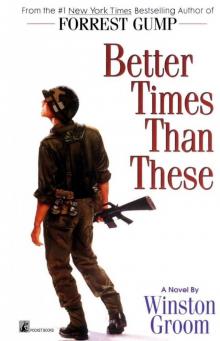 Better Times Than These
Better Times Than These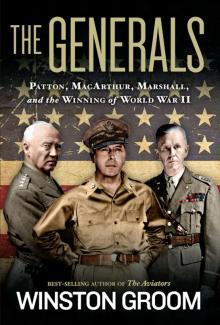 The Generals
The Generals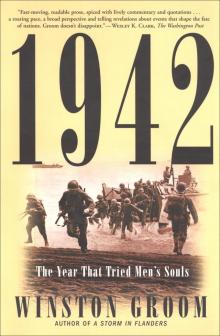 1942: The Year That Tried Men's Souls
1942: The Year That Tried Men's Souls Forrest Gump
Forrest Gump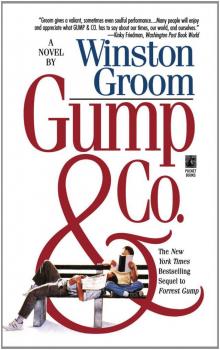 Gump and Co.
Gump and Co.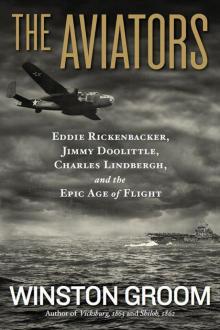 The Aviators
The Aviators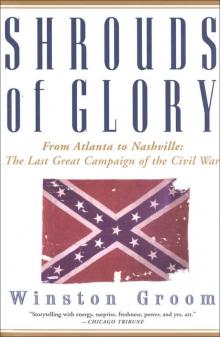 Shrouds of Glory
Shrouds of Glory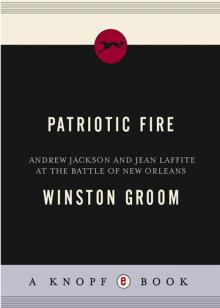 Patriotic Fire
Patriotic Fire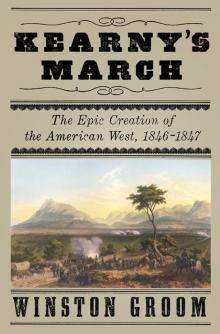 Kearny's March
Kearny's March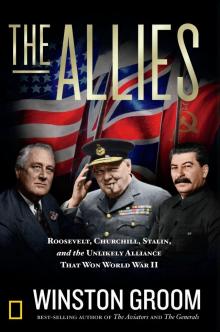 The Allies
The Allies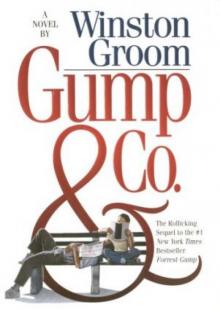 Gump & Company fg-2
Gump & Company fg-2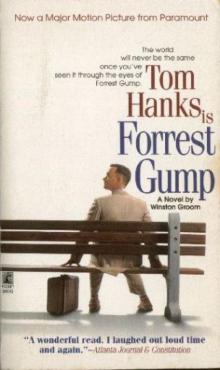 Forrest Gump fg-1
Forrest Gump fg-1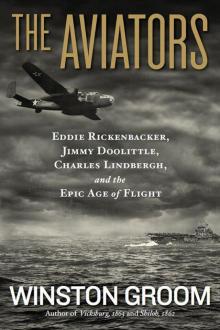 The Aviators: Eddie Rickenbacker, Jimmy Doolittle, Charles Lindbergh, and the Epic Age of Flight
The Aviators: Eddie Rickenbacker, Jimmy Doolittle, Charles Lindbergh, and the Epic Age of Flight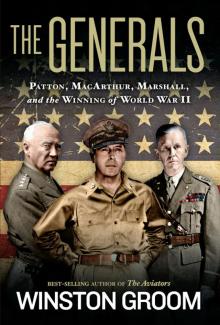 The Generals: Patton, MacArthur, Marshall, and the Winning of World War II
The Generals: Patton, MacArthur, Marshall, and the Winning of World War II